Information technology captures, stores, manages, or transmits information related to individuals or the activities of an organization. Information systems include operational and technical systems, administrative systems for managing clients for organizations to improve their efficiency and effectiveness and financial systems for tracking revenue and managing billing systems. The use of information technology is viewed as essential in today’s industry. For this presentation, the learner will: Select one organization for this assignment. List and discuss 3 or more efficiencies offered by information technology in that selected setting. Compare and contrast 2 commercially available information technology systems available to the selected setting. Identify and discuss 5 or more implementation considerations that the organization should consider when adopting an information technology system. Explore 2 or more emerging trends in information technology that will influence service deliver
Expert Answer and Explanation
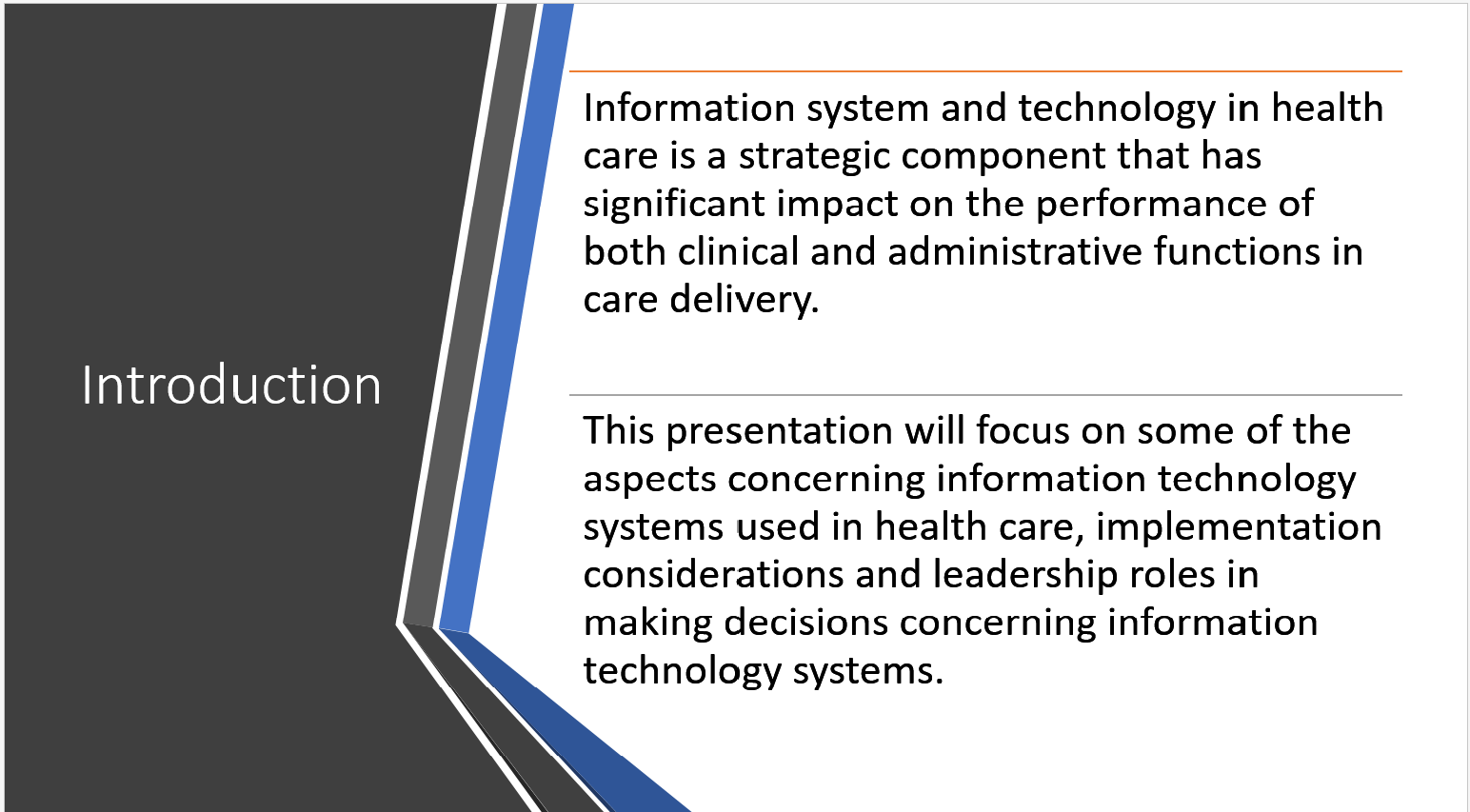
Information system and technology in health care is a strategic component that has significant impact on the efficiency and performance of both clinical and administrative functions in care delivery. This presentation will focus on some of the aspects concerning information technology systems used in health care, implementation considerations and leadership roles in making decisions concerning information technology systems
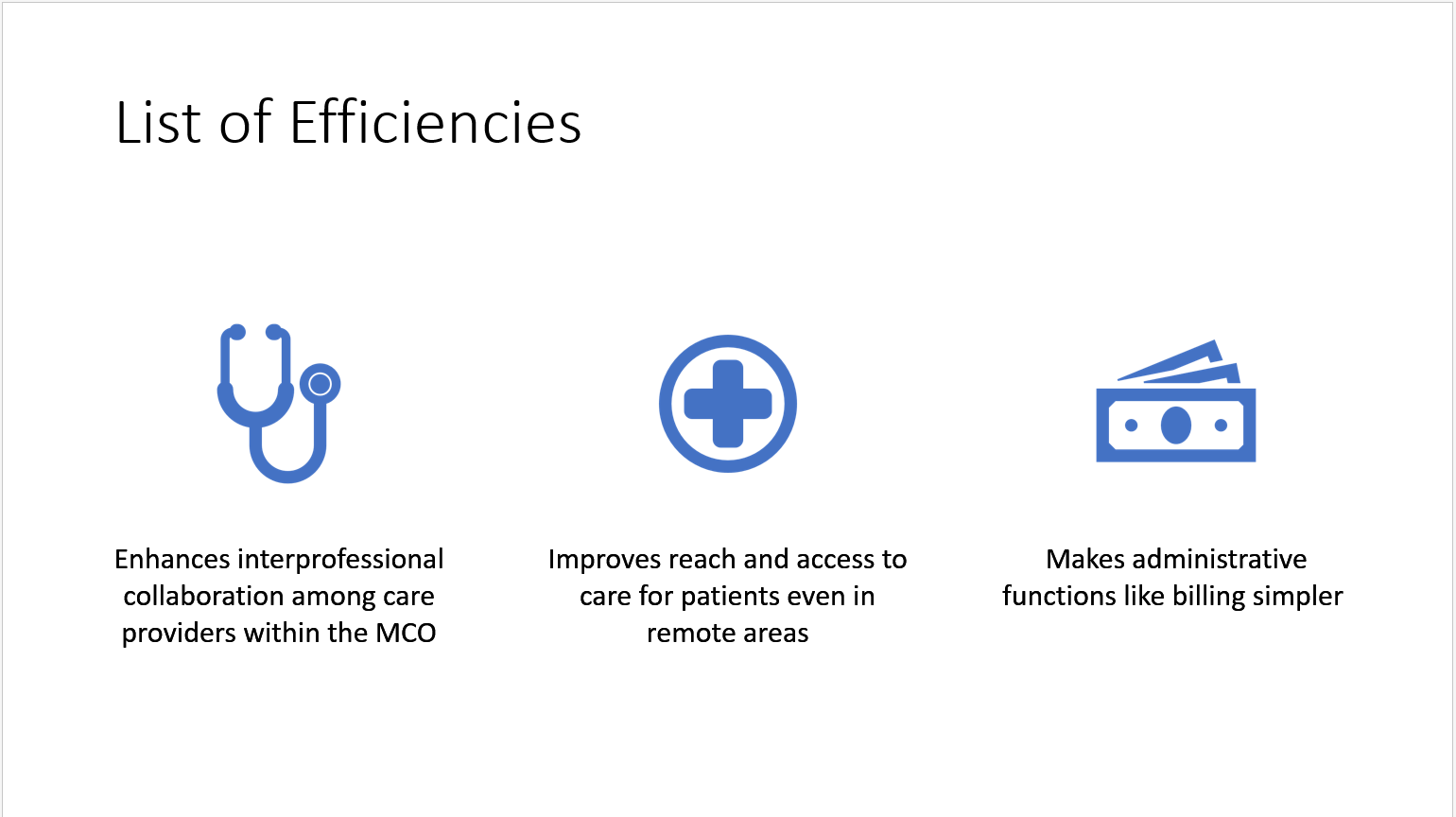
Information technology systems have changed how health care delivery is conducted, from both the clinical perspective and the administrative function of care delivery. For example, in managed care organizations, health information technology systems can provide the following three efficiencies which will be discussed in detail in the subsequent slides;
- Enhances interprofessional collaboration among care providers within the MCO
- Improves reach and access to care for patients even in remote areas
- Makes administrative functions like billing simpler
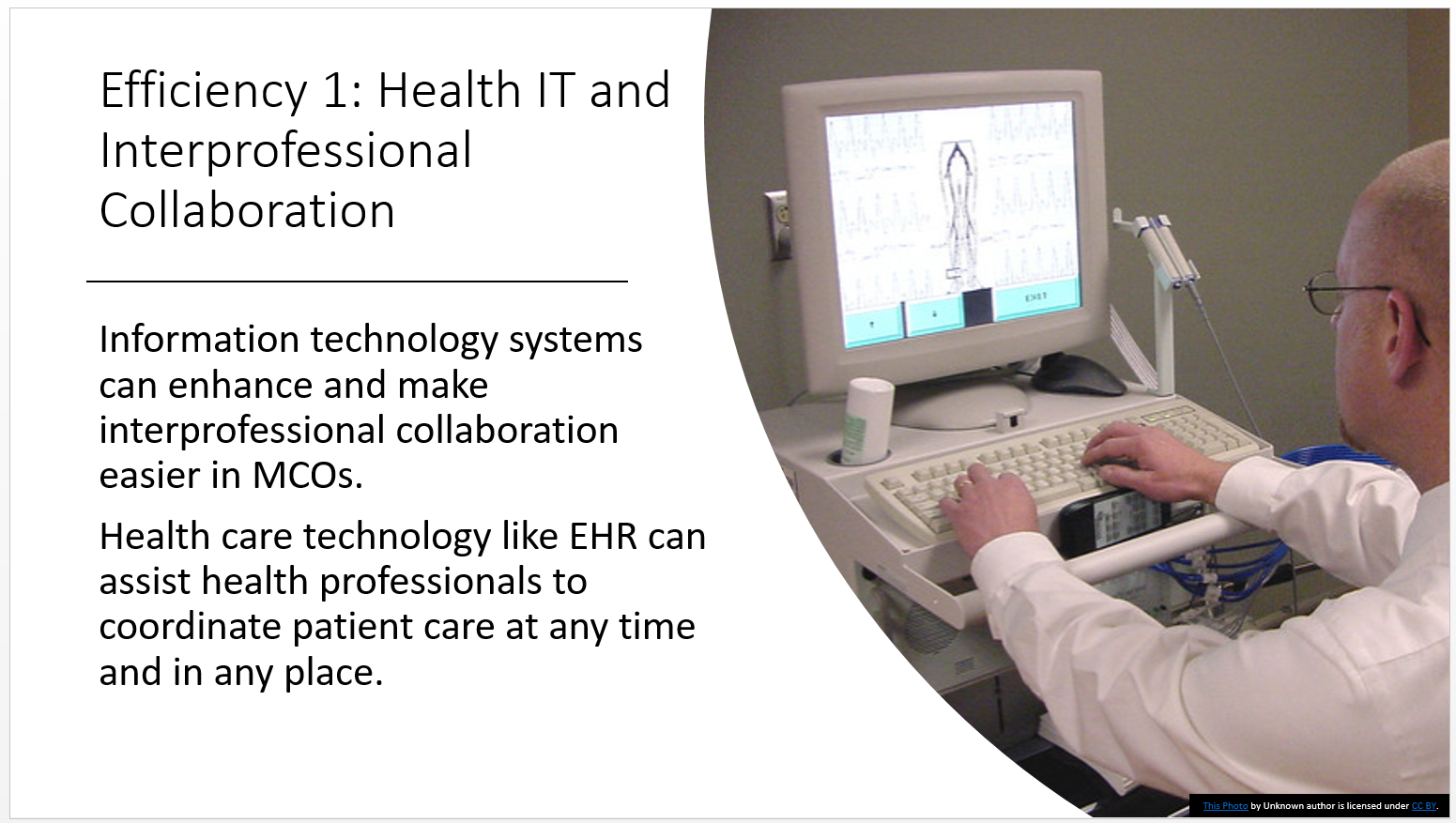
Information technology systems can be used to enhance and make interprofessional collaboration easier in MCOs. In an article by Vos et al. (2020), health care technology like EHR can assist health professionals to coordinate patient care on an informed basis at any time and in any place. The same is also true for telehealth and telemedicine services as reported by Johnson and Mahan (2020) where health care professionals are able to communicate with one another using telemedicine.
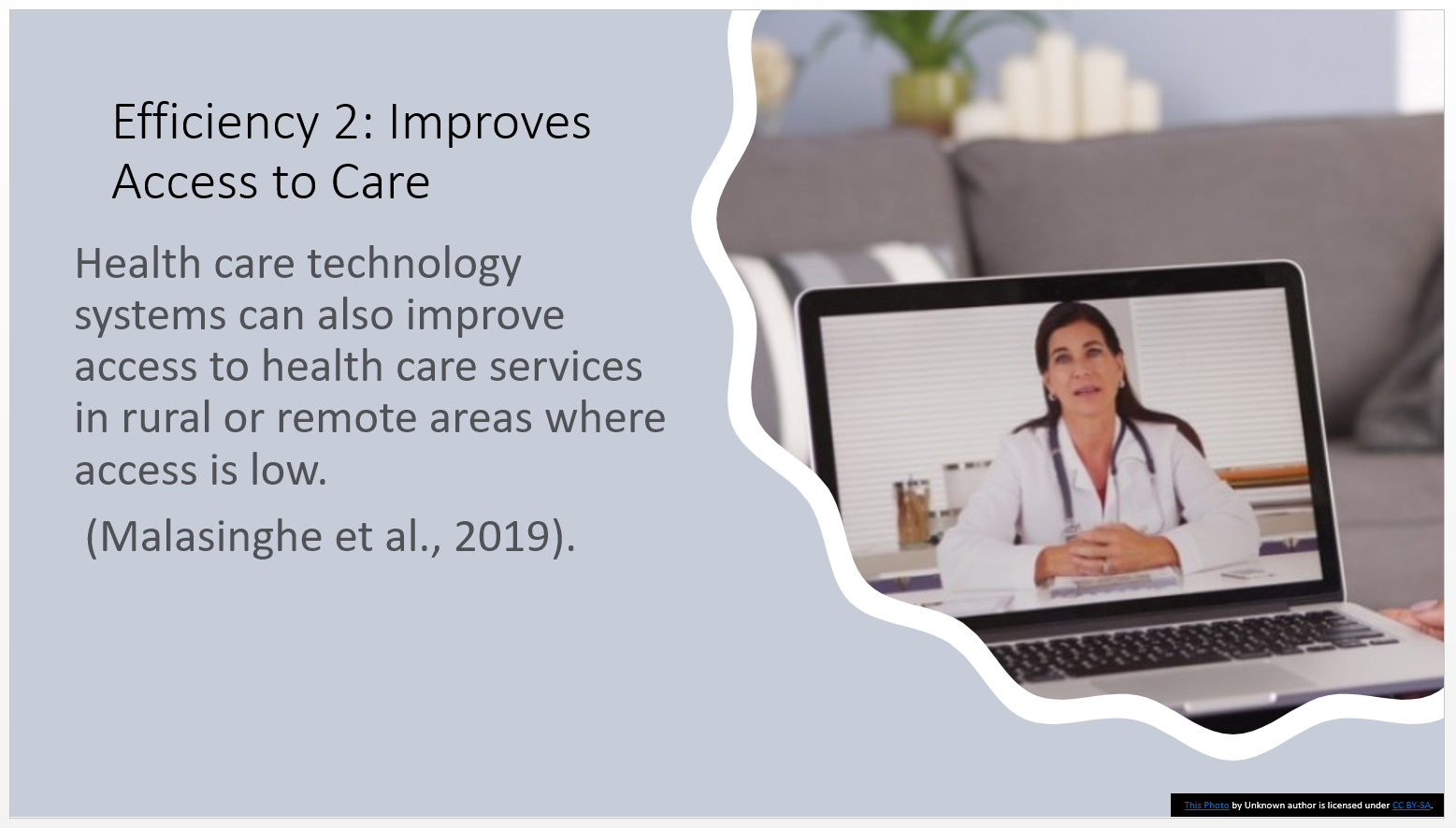
Health care technology systems can also be used to enhance access to health care services in rural or remote areas where access is low. Using systems such as remote patient monitoring systems, patients within the MCO living in rural or remote areas can get in touch with their care providers at the comfort of their homes (Malasinghe et al., 2019).

Information technology systems also assists in the administrative wing of care delivery. An example can be a function such as billing where IT systems can automate the billing procedure reducing waiting times due to administrative paperwork (McGonigle & Mastrian, 2017). Likewise, keeping an integrated database of patients, which can also be used for follow-up is easier using information technology systems.
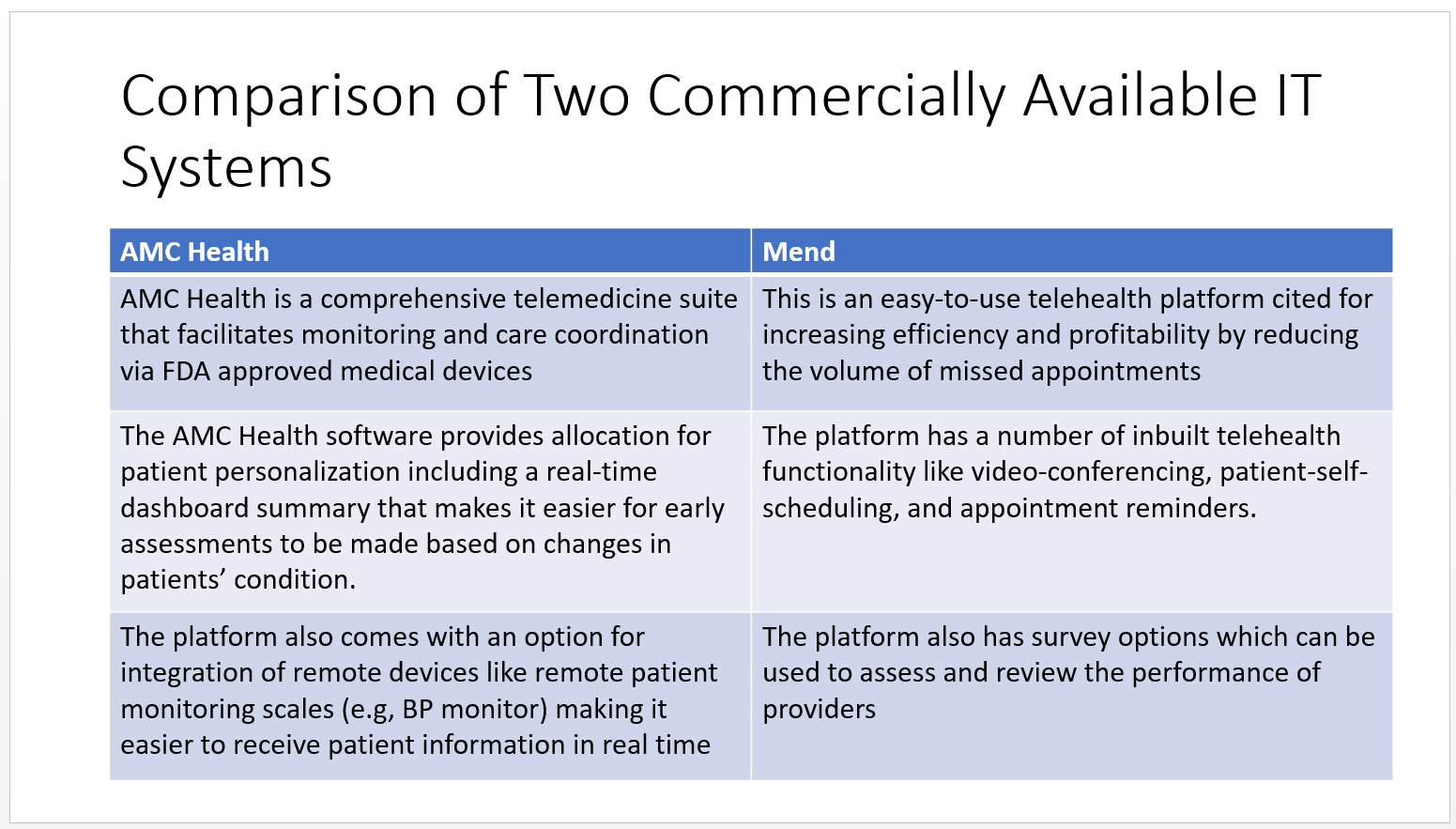
The following is a comparison between two commercial telehealth systems, that is AMC Health and Mend
AMC health
- AMC Health is a comprehensive telemedicine suite that facilitates monitoring and care coordination via FDA approved medical devices
- The AMC Health software provides allocation for patient personalization including a real-time dashboard summary that makes it easier for early assessments to be made based on changes in patients’ condition.
- The platform also comes with an option for integration of remote devices like remote patient monitoring scales (e.g, BP monitor) making it easier to receive patient information in real time
- Mend
- This is an easy-to-use telehealth platform cited for increasing efficiency and profitability by reducing the volume of missed appointments
- The platform has a number of inbuilt telehealth functionality like video-conferencing, patient-self-scheduling, and appointment reminders.
- The platform also has survey options which can be used to assess and review the performance of providers
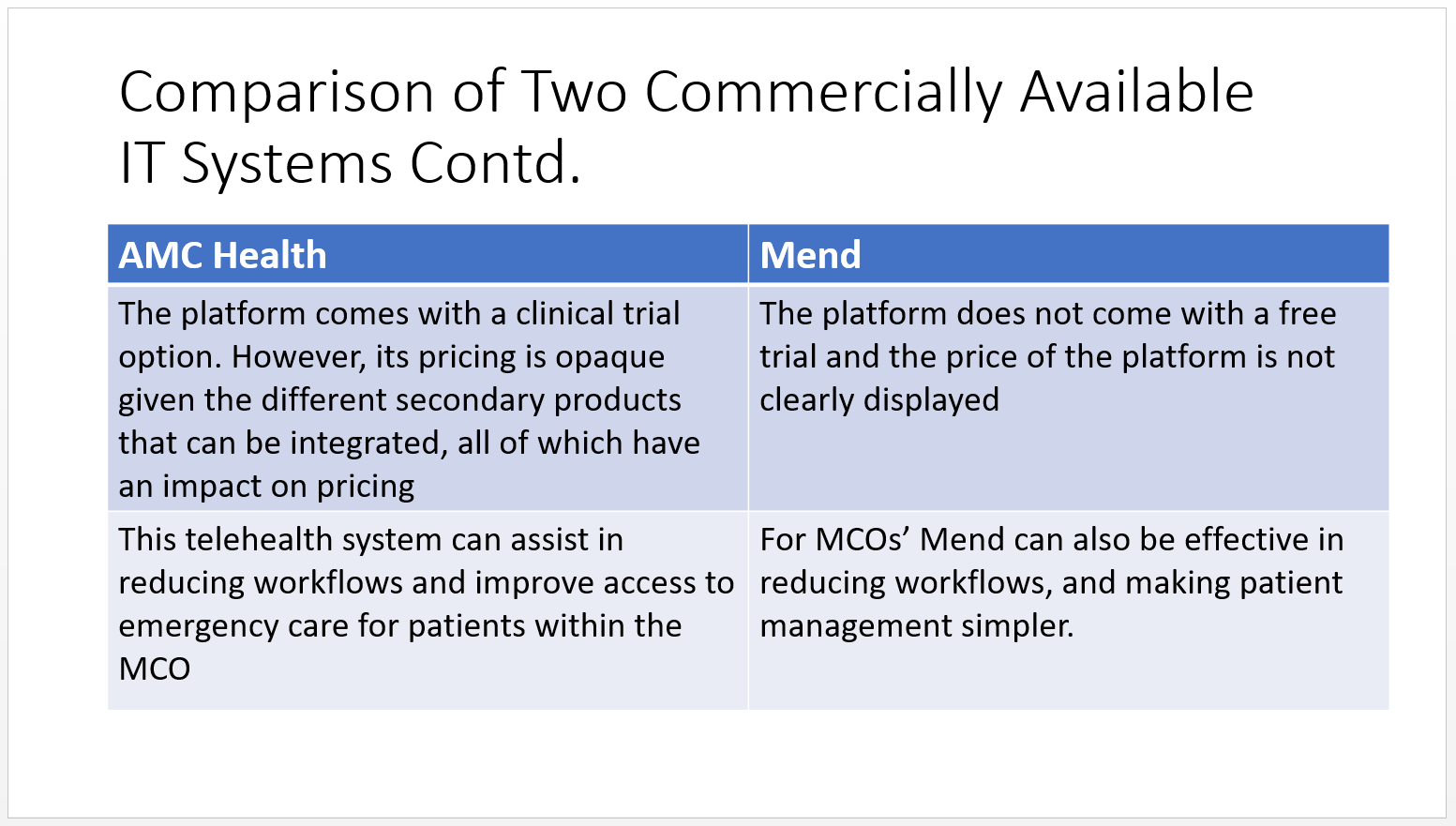
AMC Health
- The platform comes with a clinical trial option. However, its pricing is opaque given the different secondary products that can be integrated, all of which have an impact on pricing
- This telehealth system can assist in reducing workflows and improve access to emergency care for patients within the MCO
Order this paper
Information technology captures, stores, manages, or transmits information related to individuals or the activities of an organization. Information systems include operational and technical systems, administrative systems for managing clients for organizations to improve their efficiency and effectiveness and financial systems for tracking revenue and managing billing systems. The use of information technology is viewed as essential in today’s industry. For this presentation, the learner will: Select one organization for this assignment. List and discuss 3 or more efficiencies offered by information technology in that selected setting. Compare and contrast 2 commercially available information technology systems available to the selected setting. Identify and discuss 5 or more implementation considerations that the organization should consider when adopting an information technology system. Explore 2 or more emerging trends in information technology that will influence service deliver
Expert Answer and Explanation

Information system and technology in health care is a strategic component that has significant impact on the efficiency and performance of both clinical and administrative functions in care delivery. This presentation will focus on some of the aspects concerning information technology systems used in health care, implementation considerations and leadership roles in making decisions concerning information technology systems

Information technology systems have changed how health care delivery is conducted, from both the clinical perspective and the administrative function of care delivery. For example, in managed care organizations, health information technology systems can provide the following three efficiencies which will be discussed in detail in the subsequent slides;
- Enhances interprofessional collaboration among care providers within the MCO
- Improves reach and access to care for patients even in remote areas
- Makes administrative functions like billing simpler

Information technology systems can be used to enhance and make interprofessional collaboration easier in MCOs. In an article by Vos et al. (2020), health care technology like EHR can assist health professionals to coordinate patient care on an informed basis at any time and in any place. The same is also true for telehealth and telemedicine services as reported by Johnson and Mahan (2020) where health care professionals are able to communicate with one another using telemedicine.

Health care technology systems can also be used to enhance access to health care services in rural or remote areas where access is low. Using systems such as remote patient monitoring systems, patients within the MCO living in rural or remote areas can get in touch with their care providers at the comfort of their homes (Malasinghe et al., 2019).

Information technology systems also assists in the administrative wing of care delivery. An example can be a function such as billing where IT systems can automate the billing procedure reducing waiting times due to administrative paperwork (McGonigle & Mastrian, 2017). Likewise, keeping an integrated database of patients, which can also be used for follow-up is easier using information technology systems.

The following is a comparison between two commercial telehealth systems, that is AMC Health and Mend
AMC health
- AMC Health is a comprehensive telemedicine suite that facilitates monitoring and care coordination via FDA approved medical devices
- The AMC Health software provides allocation for patient personalization including a real-time dashboard summary that makes it easier for early assessments to be made based on changes in patients’ condition.
- The platform also comes with an option for integration of remote devices like remote patient monitoring scales (e.g, BP monitor) making it easier to receive patient information in real time
- Mend
- This is an easy-to-use telehealth platform cited for increasing efficiency and profitability by reducing the volume of missed appointments
- The platform has a number of inbuilt telehealth functionality like video-conferencing, patient-self-scheduling, and appointment reminders.
- The platform also has survey options which can be used to assess and review the performance of providers

AMC Health
- The platform comes with a clinical trial option. However, its pricing is opaque given the different secondary products that can be integrated, all of which have an impact on pricing
- This telehealth system can assist in reducing workflows and improve access to emergency care for patients within the MCO
Order this paper